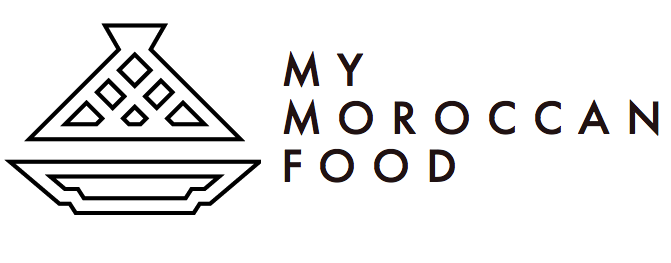The Origins of Moroccan Food
/
One of the main things my blog was missing so far was an introductory post about Moroccan food. I had been thinking about it for a while but I couldn’t get myself to start writing it. If we ignore the fact that occasionally, I can be very lazy, one of the reasons why I hadn’t started it was because I enjoy much more developing, cooking, photographing, testing and tasting recipes than writing historical articles. The other reason, and probably the main one, is because it forced me to face the hard truth: I didn’t know anything about the history of Moroccan food and I wasn’t sure where to start.
So I started with my parents hoping that they will tell me everything I needed to know and that I will write an article in no time. But of course, that didn’t happen. They started by stating that the origins of Moroccan cuisine were linked to the country’s historical influences and then mentioned the impact of the great dynasties of Morocco, the Almoravides the Almohades, the Merinides, the Saadians and the Alaouites.
After my parents, my second logical option was my dear friend google. So I googled and googled, read some very interesting articles and books and I realized that my parents were right. Morocco’s cuisine’s origins are intricate in the country’s history. Probably like any cuisine in the world.
Unlike my much-loved life partner, I am not a history person and you probably didn’t end up on my blog to fall asleep, so I won’t go in too much details but I will try to explain the impact of the main cultural and historical influences chronologically.
Berber
The Berbers, Morocco’s first inhabitants are responsible for culinary methods and practices that are still alive today. They introduced the tagine utensil more than 2000 years ago and are in fact responsible for the slow cooking and well-known cooking practice. The Berbers are also accountable for the common meat preserving technique still present in Morocco (such as ‘khlii’) and have abundantly integrated to their diet some crucial ingredients to Moroccan cuisine, such as couscous, chickpeas and beans.
Arab
The arrival of the Arabs in the 7th century has significantly influenced Morocco’s culinary heritage. In fact, the Arabs are the ones who brought the famous spices from China, India and Malaysia such as cinnamon, ginger, paprika, cumin and turmeric. Influenced by the Persians, they also brought nuts and dried fruits, which allowed the sweet and sour combination, still present in tagines and dishes like bastila. At that time, the existence of a wealthy and grand Moroccan court – through the rulers of the main existent dynasties (Almoravides, Almohades, Merinides, Saadians) – was crucial to the elaboration of the Moroccan cuisine in order to please the ambition of the courts in the four imperial cities (Fes, Meknes, Rabat and Marrakech).
Moorish
Due the Morocco’s geographical location, the Moors, (Muslim inhabitants mainly based in the Iberian Peninsula in the 8th century) from Spain had a strong impact on Moroccan cuisine. They are responsible for the increased production and use of olives and olive oil and the settlement of citrus gardens and fruit bearing trees. The Moors population was followed by the Jewish-Moors who introduced pickling and preserving fruit and vegetables techniques.
Ottoman
The Ottoman Turk presence in the geographical region introduced grills and barbecues (kebab) to Moroccan cuisine.
French
The French colonized Morocco in 1912 and brought with them a culture of cafés, wine, ice cream and patisserie.
As you can see Morocco’s geographical position and close historical relationship with other population have made Moroccan cuisine a unique melting pot of many cultures and traditions. The historical influences, the ambition of the courts in the imperial cities but also the natural inland resources have allowed Moroccan cuisine to become a delightful culinary experience.

